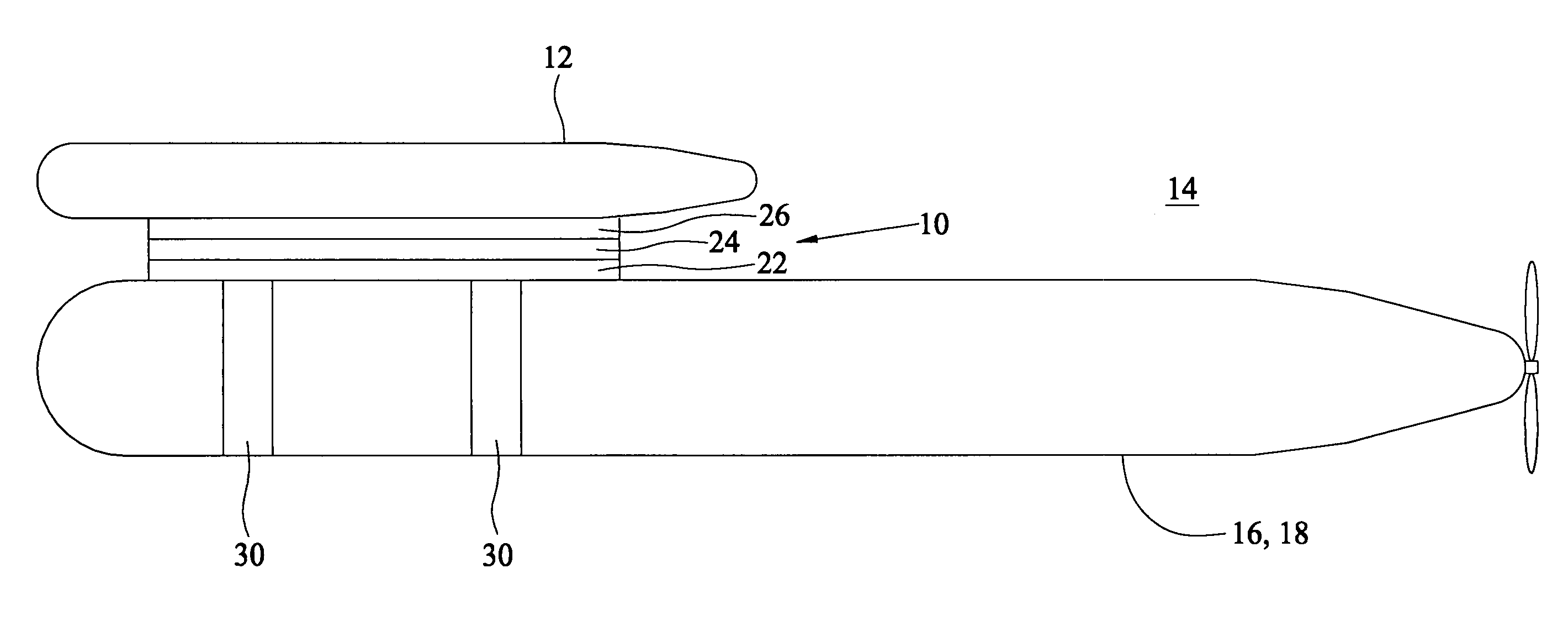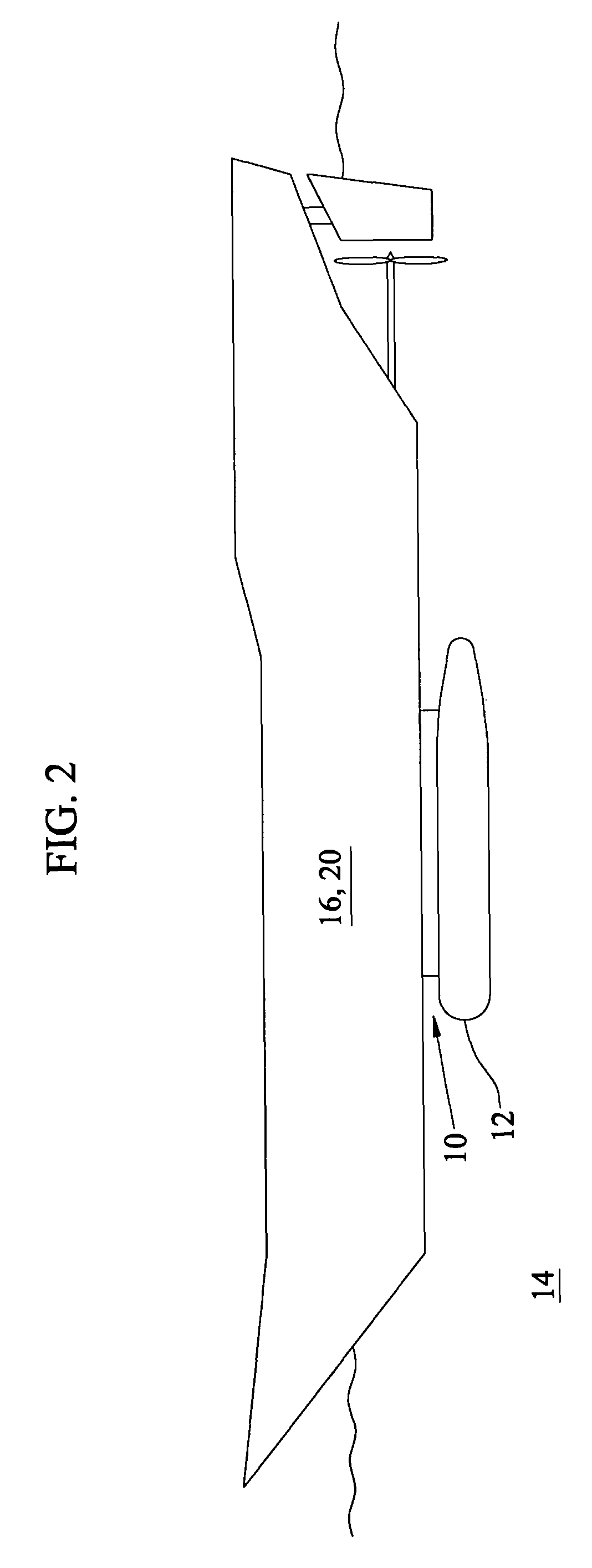Common payload rail for unmanned vehicles
a payload rail and unmanned vehicle technology, applied in the field of common payload rails, can solve the problems of compromising the effectiveness of the host unmanned vehicle, complex and costly modifications to the internal system of the vehicle, and the handling system is usually unique and expensive to construct and install, so as to reduce the hydrodynamic drag and reduce the vehicle. the effect of reducing the modification of the payload
- Summary
- Abstract
- Description
- Claims
- Application Information
AI Technical Summary
Benefits of technology
Problems solved by technology
Method used
Image
Examples
Embodiment Construction
[0021]Referring to FIGS. 1 and 2, common payload rail 10 of the invention is used to externally mount a variety of payloads 12 submerged in water 14 on an unmanned vehicle (UV) 16 such as an unmanned undersea vehicle (UUV) 18 or an unmanned surface vehicle 20. Common payload rail 10 provides a means to secure and add payload capability externally to host vehicle UVs with minimal effort and virtually no internal modifications of the UVs and no requirements to occupy space inside the UVs. In other words, common payload rail 10 attaches externally to the surface of host vehicles such as UUV 18 or USV 20, as well as on manned vessels and crafts, and then provides a standard mechanical, electrical, electronic, and hydraulic mating surface for external payloads 12 that are designed and built to meet the common mating interface standard of common payload rail 10.
[0022]Referring also to FIGS. 3 and 4, common payload rail 10 is schematically depicted as having three mutually connectable modu...
PUM
 Login to View More
Login to View More Abstract
Description
Claims
Application Information
 Login to View More
Login to View More - R&D
- Intellectual Property
- Life Sciences
- Materials
- Tech Scout
- Unparalleled Data Quality
- Higher Quality Content
- 60% Fewer Hallucinations
Browse by: Latest US Patents, China's latest patents, Technical Efficacy Thesaurus, Application Domain, Technology Topic, Popular Technical Reports.
© 2025 PatSnap. All rights reserved.Legal|Privacy policy|Modern Slavery Act Transparency Statement|Sitemap|About US| Contact US: help@patsnap.com



